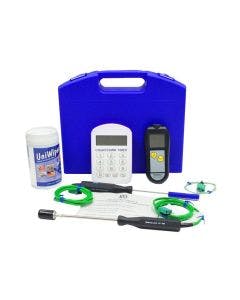Legionella Testing


LEGIONELLA TESTING
Legionella testing legislation is in place to protect people from catching legionnaires disease in public places that supply water. This means that workplaces and anyone in control of premises have a legal right to test for Legionnaires disease.
WHAT IS LEGIONNAIRES DISEASE?
Legionnaires' disease is a pneumonia infection caused by the presence of legionella bacteria in water. Legionnaires' disease is also commonly known as Pontiac fever and legionellosis. Legionella can be found in natural water, but it particularly likes to grow in warm water environments. The disease attacks and infects the lungs after inhaling through water droplets via taps, air conditioning, and air conditioning systems. It is commonly found in places with water supplies, such as schools, offices, nursing homes, hotels and leisure facilities.
Incorrect water temperature is a risk factor for the growth of Legionella, allowing bacteria to multiply in water with temperatures between 20 to 45 degrees Celcius. This is more likely to occur if a supply of nutrients, such as scale, rust, sludge or algae, is present. To control legionella bacteria, water should be stored below 20 degrees celsius if it is cold or above 60 degrees celsius and distributed above 50 degrees celsius if hot.
The NHS state that symptoms of legionnaires disease include difficulty breathing, chest pain, a cough, a high temperature and flu-like symptoms. Hospital admission may likely be required if you develop mild-moderate symptoms of legionnaires disease. Although most people recover fully from the disease, it may take a few weeks to regain total health.
IS LEGIONELLA TESTING A LEGAL REQUIREMENT?
Yes, legionella testing is a legal requirement.
There is legislation to protect people from catching Legionella Disease from public places that supply water. The Health and Safety Executive states that if you are an employer or someone in control of premises, you need to understand and implement preventative measures to control the spread of legionnaires disease -
"Duties under the Health and Safety at Work etc Act 1974 (HSWA) extend to risks from legionella bacteria, which may arise from work activities. The Management of Health and Safety at Work Regulations (MHSWR) provide a broad framework for controlling health and safety at work."
Full details can be found on the HSE website here.
This legislation is in place for all water systems, both hot and cold in workplaces, regardless of the size. The lower limit of 300L was previously used to exclude domestic systems, but this no longer applies. This legislation also applies to domestic landlords who have a duty of care for their tenants to keep them safe from health hazards. Please note that this code only applies to risk arising from a work activity; it does not apply to domestic systems, which may also represent a risk.
Please be aware that all employers who manage premises with hot/cold water systems and/or a wet cooling system have a legal responsibility to identify any risk of contamination and to prevent or control it.
Read our dedicated blog - Legionella Risks When Reopening Your Business to find out more about legionella's presence in a workplace after a business has been closed.
WHAT IS A LEGIONELLA TESTING KIT?
A legionella testing kit is a kit that you can purchase to carry out testing for Legionella yourself. Frontline Safety recommends the ETI Legionnaires Thermometer Kit for testing for legionella disease. Anyone can use the ETI legionnaires kit to test for Legionella as it is a straightforward, user-friendly solution for legionella testing. No training or previous experience in legionella testing is required to use this kit.
The kit has everything you need to test for Legionella quickly and efficiently. The ETI Legionnaires' Thermometer Kit can be used to monitor and test the temperature of standing water and the surface of pipes and tanks forming part of a water system. The kit includes a thermometer, immersion probe, ribbon surface probe, wire probe, timer, anti-bacterial wipes and a carrying case. This kit also includes a free, traceable certificate of calibration. This certificate can be used to show confirmation of calibration to keep compliant. The immersion probe within the kit can be placed in the water to a minimum depth of 25mm. The ribbon surface probe may be used to take the temperature of pipes and tanks, and the wire probe can be used to reach awkward places or where the use of other probes may not be appropriate
The Frontline Safety How do I Detect Legionella Using ETI's Legionnaires Thermometer Kit blog features all the components of the ETI Legionnaires' Kit in a step-by-step guide detailing what part is used for what.

HOW DO I TEST MY WATER FOR LEGIONELLA
Frontline Safety has a range of content that can guide and instruct you on how to test your water for Legionella using the ET Legionnaires' Water Testing Kit.
Blogs
- Legionella Risks When Reopening Your Business
- How do I detect Legionella using ETI's Legionnaires Thermometer Kit?
- ETI Legionnaires' Kit - Top 5 Things You Should Know
- Legionella Testing for Landlords
Videos


